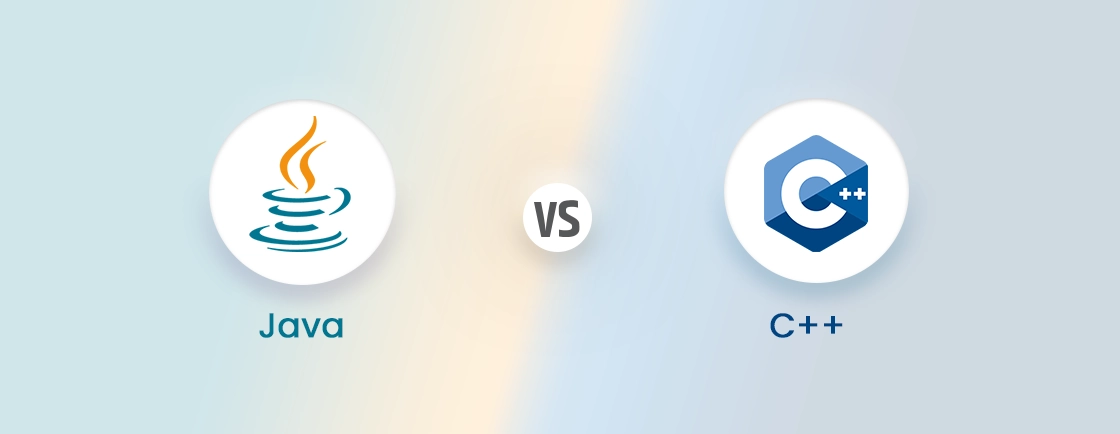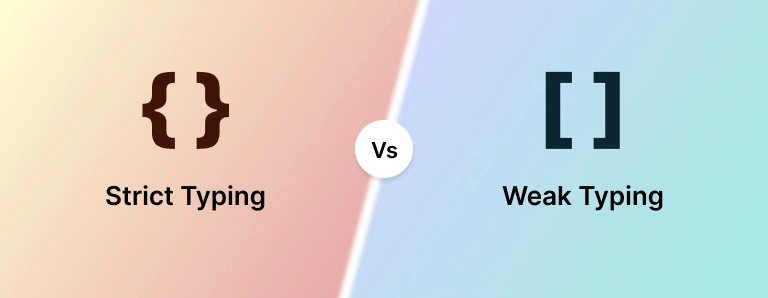Table of Contents
Choosing the right platform for your web project is a crucial decision that can significantly impact its success. Two of the most popular options preferred by web development experts are WordPress and React. While both have their strengths and weaknesses, understanding their key differences can help you make an informed choice.
Therefore, in this blog, we’ll understand the features of both the tools and what they are ideal for. After that, we’ll dive into a quick and detailed comparison based on factors like customization, performance, security and more. With that, let’s begin!
What is WordPress?
WordPress is a popular content management system (CMS) used to create and manage websites. Originally launched in 2003 as a blogging platform, it has evolved into a versatile platform for building various types of websites.
It’s known for its flexibility, ease of use, and extensive customization options through themes and plugins. WordPress powers millions of websites worldwide, ranging from creating blog sites to eCommerce stores.
Key Features of WordPress
- User-Friendly Interface: WordPress provides a simple and intuitive dashboard that allows users to easily create, edit, and manage content. Its visual editor (Gutenberg block editor or Classic editor) helps users format text, insert images and embed videos without needing to write code.
- Themes for Design Customization: It comes with thousands of free and premium themes that control the look and feel of your site. These themes allow non-designers to create visually appealing websites by applying pre-designed layouts and templates.
- Plugins for Functionality: With over 60,000 free and premium plugins, WordPress allows users to add various features and functionality to their sites. It provides tools to create contact forms, social media integration, security features, and eCommerce capabilities like WooCommerce.
- SEO-Friendly: It is designed with SEO in mind, providing features like clean URLs and customizable permalinks. That enhances the ability to use plugins like Yoast SEO and Rank Math to optimize WordPress site SEO.
- Flexible Content Types: In addition to blog posts and pages, WordPress offers custom post types and taxonomies, enabling you to manage different types of content, such as products, portfolios, testimonials, and more.
- eCommerce Capabilities: It is often used to build online stores using the WooCommerce plugin, a powerful tool that provides everything needed to run an eCommerce website, including product management, payments, shipping, and inventory.
- Multisite and Multilingual Capabilities: WordPress offers multisite development, allowing you to manage multiple websites from a single WordPress dashboard. It also enables developers to build multilingual sites through plugins like WPML and Polylang.
By leveraging these features of WordPress, you can create a simple blog site and a complex eCommerce store. But if you want a highly customized and robust website, consider hiring WordPress developers.
What is React?
React is a popular open-source JavaScript library developed by Facebook for building user interfaces. It’s known for its efficiency, flexibility, and component-based architecture. React is used particularly for building user interfaces of single-page applications (SPAs).
It enables developers to create reusable UI components, which makes the process of building the front end rapid. Unlike traditional websites that reload the entire page when a user interacts with it, React uses virtual DOM (Document Object Model). That means the site loads only the updated section, making it more responsive.
Key Features of React
- Component-Based Architecture: React is built around the concept of components, which are reusable pieces of code that define how a particular part of the UI looks and behaves. Components can be nested, managed, and reused, allowing for modular and scalable development.
- Virtual DOM (Document Object Model): It uses a Virtual DOM to improve performance. Instead of manipulating the real DOM directly, React creates a lightweight in-memory representation of the actual DOM. When changes occur, React only updates the specific components, leading to faster rendering.
- Declarative UI: React uses a declarative approach, allowing you to describe what you want the UI to look like rather than specifying how to achieve it. This declarative approach makes the code easier to understand and less prone to errors.
- JSX (JavaScript XML): It uses JSX, a syntax extension that allows developers to write HTML-like code within JavaScript. JSX makes it easier to visualize the structure of the UI components and improves code readability.
- One-Way Data Binding: React uses one-way data flow, where data is passed from a parent component to its child components through props. This makes it easier to track data, which is especially helpful for large websites. The unidirectional flow ensures that changes in the application’s state are predictable and easier to debug.
- State Management: It provides built-in state management for components, allowing developers to track and manage changes to the site. For more complex state management, React also uses external libraries like Redux, Zustand, or React Context.
- React Hooks: React introduced hooks in version 16.8, allowing developers to use state and other React features without writing class-based components. Hooks like useState and useEffect simplify state management and side-effects handling in functional components.
- React Hooks: The hooks were introduced in React 16.8, allowing developers to use state without writing class-based components. Hooks like useState and useEffect simplify state management and side-effects handling in functional components.
These features of React make it an ideal choice for building frontend of single page application sites. Leveraging this tool could be complex; therefore, it is recommended that you get assistance from professional ReactJs developers.
WordPress vs React: Comparison Table
| Aspect | WordPress | React |
|---|---|---|
| Type | Content Management System (CMS) | JavaScript Library |
| Primary Use | Building websites (blogs, eCommerce, portfolios, business sites) | Building dynamic, interactive UIs for Single-Page Applications (SPAs) |
| Ease of Use | Highly user-friendly, especially for non-developers | Requires development knowledge, particularly JavaScript |
| Setup | Simple installation; easy to get started with themes & plugins | Requires setup with build tools like Webpack, Babel, or Create React App |
| Customization | Customizable via themes and plugins | Highly customizable via components, but requires coding |
| Approach | Focuses on ease of content creation and management | Focuses on building modular, reusable UI components |
| Design Flexibility | Limited to theme designs (can be extended with custom code) | Completely flexible UI design with full control via components |
| Data Handling | Relies on MySQL database for storing content | Manages data via state, props, or external libraries (e.g., Redux, Context API) |
| SEO | Built-in SEO tools via plugins (Yoast, Rank Math) | SEO requires external libraries and frameworks (e.g., Next.js for SSR) |
| Performance | Slower compared to React for dynamic, large-scale apps | High performance with Virtual DOM and optimized rendering |
| eCommerce Support | WooCommerce and other plugins provide robust eCommerce functionality | Needs integration with external eCommerce platforms like Shopify or custom APIs |
| Plugins & Ecosystem | Over 60,000 plugins available for extending functionality | Rich ecosystem of third-party libraries for UI, state management, and routing |
| Learning Curve | Low; can be used with little to no coding experience | Moderate to high; requires knowledge of JavaScript, JSX, and web development concepts |
| Mobile App Development | Limited (e.g., using tools like AppPresser) | React Native allows building cross-platform mobile apps |
| Security | Regular updates, security plugins available, but can be vulnerable without proper maintenance | More secure by design, but security depends on the developer’s implementation |
| Multisite/Multilingual | Supports multisite and multilingual sites via plugins | Requires custom implementation or third-party libraries |
| Hosting | Wide variety of hosting options, including managed WordPress hosting | Needs custom hosting setup or services like Vercel, Netlify |
| Cost | Free, but costs associated with hosting, themes, and plugins | Free, but costs associated with development, hosting, and tools |
Comprehensive Difference Between WordPress and React
When choosing web development technologies for building robust sites, comparing them based on various factors is important. Here is a detailed dive into the difference between WordPress and React:
Ease of Use
WordPress is incredibly user-friendly and designed for non-technical users. It provides an intuitive interface, drag-and-drop builders, and a vast collection of themes and plugins that make website building accessible even for beginners. Little to no coding knowledge is required to create and manage websites.
React requires a higher level of technical expertise. Users need to understand JavaScript, JSX, and component-based architecture. It is a powerful tool for developers but has a steep learning curve for non-developers.
Verdict: WordPress is much easier for non-technical users and beginners. On the other hand, React is better suited for developers looking to build complex and dynamic web applications.
Customization
WordPress allows extensive customization through plugins and themes. While users can change site layouts and features with ease, deep customization may require coding skills in PHP, HTML, and CSS. There are limitations to how much you can customize without altering the core platform.
React offers unparalleled customization flexibility. Developers have complete control over the UI and functionality, but everything must be coded from scratch. There are no limitations on what you can build, but it demands a higher level of expertise.
Verdict: WordPress is a better fit for users who prefer ease with moderate customization options. Conversely, React could be a good option if you need full control over the customization of their website.
WordPress makes it easier to make quick customizations using pre-built tools. Conversely, react offers much greater flexibility for developers who want full control over every aspect of the project.
Performance
WordPress performance can degrade as plugins, themes, and content scale up. Without optimization (e.g., caching, CDNs), websites may load slower, especially on shared hosting. WordPress is also server-side rendered, which can be slower compared to front-end frameworks.
React offers superior performance due to its Virtual DOM, which minimizes page reloads and updates only the parts of the page that change. This makes React applications faster and more efficient, especially for dynamic and interactive web apps.
Verdict: React outperforms WordPress when it comes to handling dynamic content and complex web applications, making it ideal for high-performance needs. WordPress can be slower, especially with heavy plugin usage.
SEO
WordPress is SEO-friendly out of the box. It offers plugins like Yoast SEO and Rank Math that provide extensive website optimization tools, such as metadata management, sitemaps, and schema markup. WordPress is well-suited for content-heavy sites with high SEO requirements.
React requires extra steps for SEO optimization because it’s often used for single-page applications where content is dynamically rendered. Developers can use libraries like Next.js for server-side rendering (SSR) for static site generation to make React websites SEO-friendly.
Verdict: WordPress is inherently better for SEO, especially for content-heavy websites. Conversely, React requires additional configuration (e.g., SSR, SSG) to be as SEO-friendly as WordPress.
Scalability
WordPress can scale but requires significant optimization and careful management as it grows. A large number of plugins, themes, or poorly optimized code can slow down the site, especially with high traffic. Enterprise-level scalability requires custom development and hosting solutions.
React is highly scalable and ideal for building large, complex applications. Its component-based architecture allows for modular development, making it easy to scale by adding new features or expanding the project without compromising performance.
Verdict: React is better suited for large, dynamic applications that need to scale efficiently. On the other hand, WordPress can scale for medium to large websites but may require more effort to ensure performance.
Security
WordPress security depends heavily on third-party themes, plugins, and hosting environments. It is a frequent target for hackers due to its widespread use. However, security can be strengthened with regular updates, security plugins, and good hosting practices.
React is secure by design, but security largely depends on how developers handle authentication, API integrations, and third-party libraries. Since React is mostly used for frontend development, security risks like cross-site scripting (XSS) must be managed, but backend security is handled separately.
Verdict: React provides more secure possibilities if best practices are followed during development. WordPress can be secure, but users must ensure security before using a third-party plugin/theme and maintain regular updates.
Development time
WordPress is much faster to develop for simple websites. Pre-built themes and plugins allow users to set up a functioning website in a matter of hours. Custom development takes less time than React.
React development is more time-consuming because everything is built from scratch, including design and functionality. Developers need to manually configure components, routing, and state management, which adds to the development time.
WordPress offers a much faster time to market for most websites, while React takes longer but provides more control over the functionalities.
Cost
The WordPress core is free, but costs can arise from purchasing premium themes, plugins, and hosting services. WordPress maintenance costs can also add to the total expenses, but they remain affordable for small to medium websites.
React is also free, but the cost is primarily in the development resources. Building a React application from scratch requires hiring skilled web developers, which can be expensive. Additionally, React sites may require more advanced hosting solutions, especially when using SSR.
Verdict: WordPress is generally more affordable, especially for smaller projects. React can be costlier due to the need for skilled developers and custom solutions.
By considering these factors, you can make the best choice based on your requirements. If you are comfortable with complex coding and want more customization, React could be your choice. If you want ease with pre-built options, choose WordPress. To get your site developed with the best practices followed, consider hiring web developers.
Final Verdict
Both WordPress and React offer unique advantages and are suitable for different types of web projects. WordPress is a user-friendly CMS ideal for content-focused websites. On the other hand, React is a powerful JavaScript library for building dynamic and interactive web applications. Here is how you can make a choice:
- Choose WordPress if: You want a user-friendly platform for building content-heavy websites like blogs, portfolios, or eCommerce stores without extensive coding.
- Choose React if: You’re a developer looking to build dynamic, highly interactive web applications or single-page apps (SPAs) with full control over the UI.
By considering what your needs are and what features and advantages each of these tools offer, you can make an ideal choice. If you are looking to build a site that is well-designed, robust and scalable, hire web developers.
FAQs About WordPress vs React
Can you use ReactJS with WordPress?
Yes, many developers use WordPress as a headless CMS with a React front-end. This allows content to be managed in WordPress while leveraging React for dynamic user interfaces and better performance.
Which is better for SEO, WordPress or React?
Both WordPress and React can be optimized for SEO, but WordPress has built-in SEO features and many SEO-friendly plugins available. React requires more manual SEO implementation.
Does WordPress support responsive design?
Yes, WordPress supports responsive design. Most modern WordPress themes are responsive by default, meaning they automatically adjust to different screen sizes, such as mobile, tablet, and desktop devices. Plus, you can use plugins and WordPress’s built-in customizer to further optimize your site’s responsiveness.
Compare the best tech side by side.
Our in-depth comparisons help you see features, pros & cons, and choose the right tools confidently.





